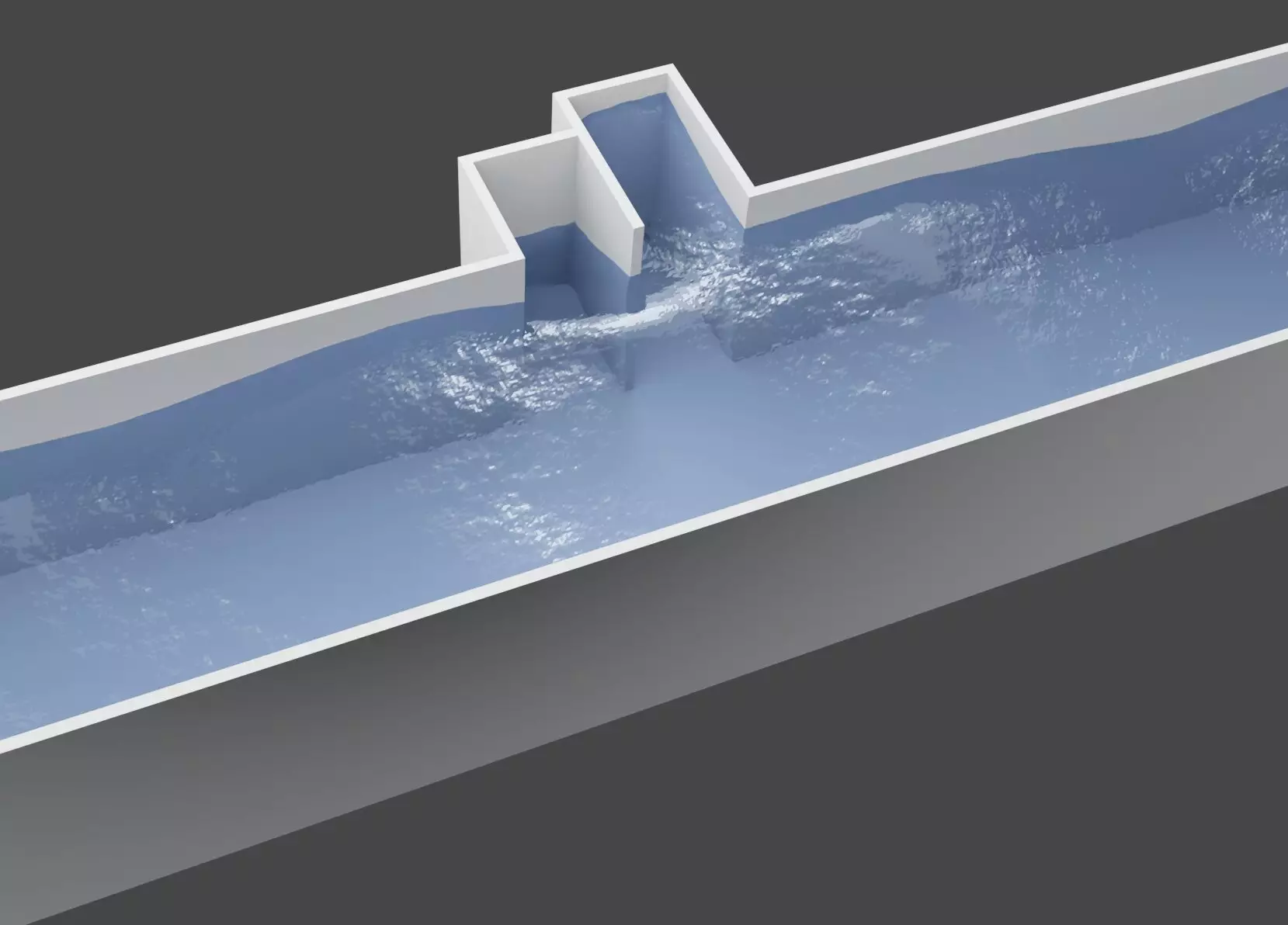The absorption of water waves has long been a topic of interest for researchers aiming to devise effective strategies to protect coasts and structures from wave-induced damage. Recently, a team of researchers from various institutions, including Sorbonne Université CNRS and University of Bristol, introduced a promising new strategy for achieving efficient water wave absorption. In their paper published in Physical Review Letters, they explored the concept of resonant absorption based on Autler-Townes splitting, a physical effect characterized by the splitting of two transition states. This innovative approach holds great potential for mitigating the impact of water waves during extreme weather conditions.
The research team behind this study has been dedicated to investigating water wave-related issues for almost two decades. Over the past five years, their focus has been specifically on the absorption of waves for the protection of coasts and offshore structures. Their approach involves the use of resonant mechanisms, which guide the development of strategies aimed at enabling efficient absorption. Resonant absorption of water waves has been a persistent challenge, and the team sought to leverage the well-established Autler-Townes splitting effect to control wave propagation.
The researchers’ paper proposes a new strategy for achieving perfect resonant absorption of guided water waves. By implementing Autler-Townes splitting, they aim to control the propagation of waves more effectively. Autler-Townes splitting is a phenomenon that occurs in two-level resonant systems, resulting in a splitting of two transition states into smaller doublet states. This effect has been observed in various physical systems, from radio frequency sources to lasers and atoms. Applying this concept to water wave absorption required innovative experimental design and optical measurements.
The team conducted theoretical analyses, numerical simulations, and experiments to demonstrate the effectiveness of their proposed strategy. In their experiments, they achieved complete absorption of guided water waves using a carefully designed asymmetric point-like scatterer, consisting of two closely spaced resonant side channels connected to a guide. The most significant result they observed was the efficiency of absorption, indicating the complete suppression of waves reflected and transmitted by the sub-wavelength device. This finding holds great promise for practical applications, particularly in the design of systems for coastal protection and structures near bodies of water.
The proposed strategy for resonant absorption of water waves opens up new possibilities for testing in both laboratory and real-world settings. Confirming its effectiveness could lead to its implementation in coastal regions, where it could effectively control the energy of waves hitting shores and man-made structures. By limiting the associated damage, this approach could significantly contribute to coastal protection efforts. Additionally, considering the non-linear nature and wide spectral content of water waves is crucial for the development of practical applications in seas and oceans.
This groundbreaking research by the team from Sorbonne Université CNRS and other institutions introduces a novel strategy for resonant absorption of water waves. By drawing inspiration from Autler-Townes splitting, they have successfully demonstrated the potential for achieving efficient absorption of guided water waves. This advancement holds significant promise for protecting coasts and structures from wave-induced damage, offering a new avenue for mitigating the impact of extreme weather conditions.


Leave a Reply